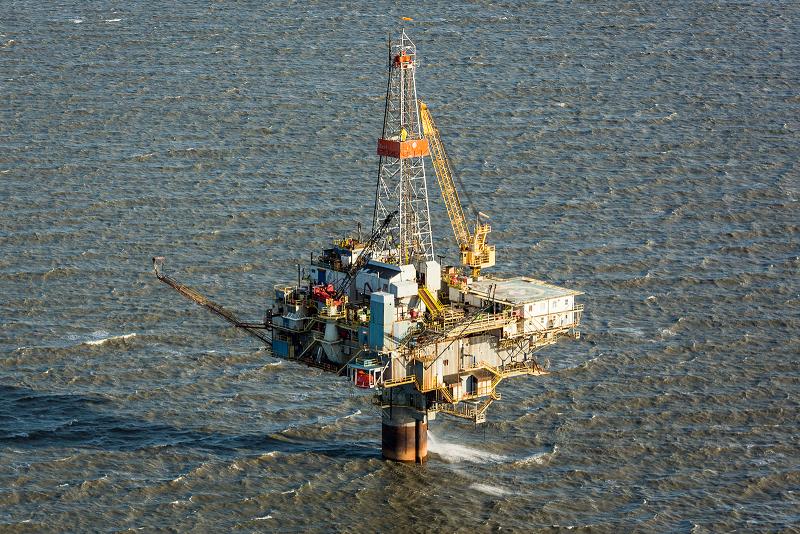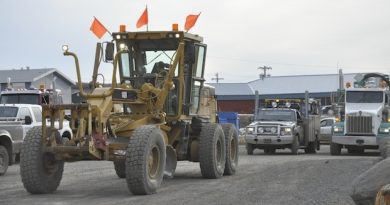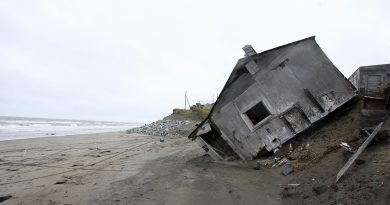State officials say Alaska’s Cook Inlet may have enough natural gas to avert crisis
 JUNEAU — Cook Inlet may have plenty of natural gas for years to come, Alaska officials are telling lawmakers.
JUNEAU — Cook Inlet may have plenty of natural gas for years to come, Alaska officials are telling lawmakers.
“There’s still large volumes of gas and oil, we believe, to be discovered,” said Dan Sullivan, commissioner of the Department of Natural Resources. Sullivan said companies are planning to spend millions of dollars to bring new Cook Inlet gas to market.
A recent study by the state Division of Oil & Gas Resource Evaluation Section found that Cook Inlet has significantly more natural gas available than did a recent study for Anchorage-area utilities, which raised concerns that winter-time demand couldn’t be met.
‘Significant increase’
Senior Petroleum Geologist Paul Decker, who appeared before legislative committees with Sullivan, said his study used a methodology called “material balance analysis” to determine the amount of gas available, rather than the “decline curve analysis” used in the study for the local utilities.
The utility study predicted gas supply shortfalls in the next year or two.
“We found about one-third more gas that we would categorize as reserves, fairly certain volumes of gas in the existing fields and throughout the basin,” Decker said. “That’s a significant increase.”
Decker said the differences in studies were sometimes because the utilities were focused on gas they could get under contract, which is often less than the amount actually available. Recent ownership changes of gas wells in Cook Inlet may have led to a reluctance to sign new contracts, he added.
Decker said that the utility study, done by a company called Petrotechnical Resources Alaska, remained a concern, but did not mean Cook Inlet’s resources were depleted. It simply means the Inlet is not being explored or drilled fast enough, he said.
The resources found by the state study are “certainly enough to meet the average demand for several years,” he said.
That’s less than the peak amounts needed in winter by local natural gas utilities and power plants, but the new Cook Inlet Natural Gas Storage Alaska (CINGSA) facility that went online this year will help meet that demand, Decker said.
Utilities up next
The Resources Committee will hear from Southcentral utilities on Wednesday, but for at least one day, legislators throughout the Capitol reacted favorably to the information, calling it good news for the region. Senate Resources Committee Chair Cathy Giessel, R-Anchorage, said the new study was very optimistic for the state and confirmed what she’d been hearing from explorers.
“They’re very optimistic,” she said.
While the gas may be there, getting it to customers will require big investments from explorers and producers. “We have plenty of gas down here, we just have to get to it,” said Rep. Chris Tuck, D-Anchorage, a leader among Democrats on oil and gas issues.
Sullivan said that’s already beginning to happen. The Cook Inlet area, Alaska’s oldest oil and gas province, is undergoing a renaissance in exploration with tens of millions in state subsidies and hundreds of millions in private investment, he said.
Sullivan called exploration “one of the good-news stories, because there is a lot of it.”
‘Voting with pocketbook’
Decker said the exploration companies that are making big investments in Cook Inlet drilling agree with his assessment and that of a recent study by the U.S. Geological Survey, which concluded there are big quantities of undiscovered natural gas in Cook Inlet.
“They’re voting with their pocketbook,” Decker said of the explorers.
It’s important that new gas come to market, but Sen. Bill Wielechowski, D-Anchorage, said he was concerned that if the state subsidizes a small-diameter pipeline, the project would undermine the efforts to encourage more drilling.
“It does discourage exploration in Cook Inlet from the testimony we’ve heard,” he said. That could mean Anchorage-area residents would be committed to paying high costs for natural gas indefinitely due to an expensive pipeline, he said.
Legislator who works for ConocoPhillips skeptical
But Sen. Peter Micciche, R-Soldotna, said guaranteeing a long-term natural gas supply was critical to the state.
“We are clearly challenged with supply in Cook Inlet,” he said. While Micciche said he hoped that exploration in Cook Inlet would delay shortfalls, a gasline was still needed.
“We need an insurance policy, a guaranteed supply of natural gas from the North Slope to not only provide Alaskans with lower-cost energy but to provide industry, mines, processing facilities, mom and pop industries along the way with access to natural gas,” Micciche said.
When not serving in the Legislature, Micciche works for ConocoPhillips Co. as superintendent of the company’s liquified natural gas export plant that would probably get a supply of natural gas from a new pipeline. He denied that his industry job would affect his legislative duties.
Natural Resources Deputy Commissioner Joe Balash said past actions by the Regulatory Commission of Alaska to hold down natural gas prices may have limited drilling in Cook Inlet and play a role in today’s projected shortages.
Contact Pat Forgey at pat(at)alaskadispatch.com
For more stories from Alaska Dispatch, click here



